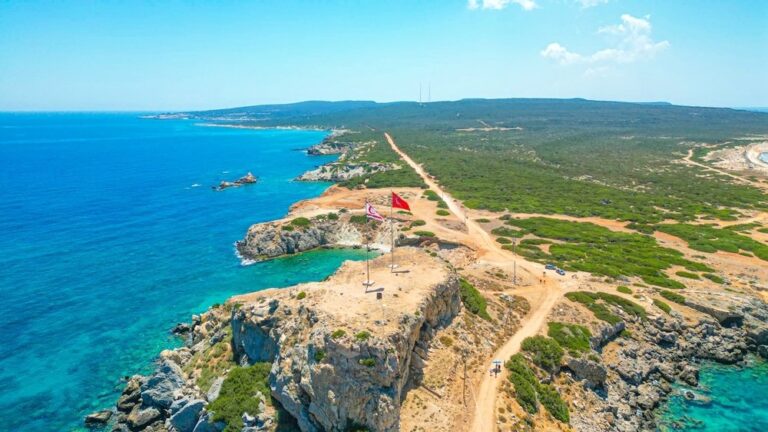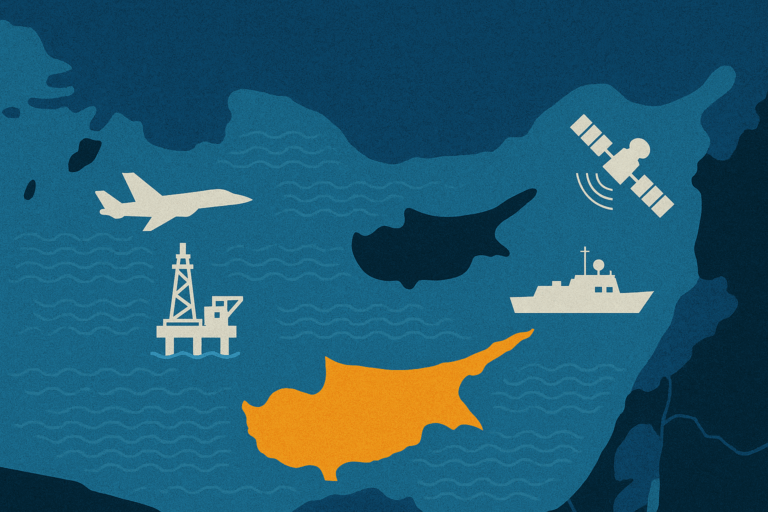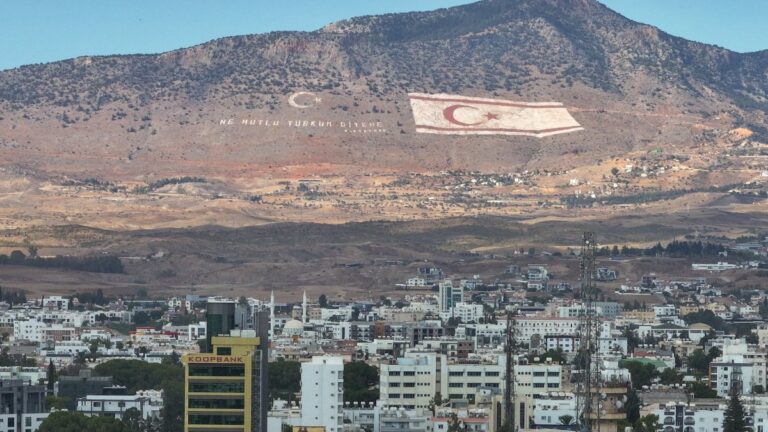Greek Cypriot Foreign Minister Nikos Christodoulides recently condemned the conversion of Christian churches into mosques and the construction of huge mosques in the Turkish Republic of Northern Cyprus (TRNC), saying the government should be trying to protect Cyprus´ cultural heritage, according to the English-language newspaper Cyprus Mail.
Of course, neither the facts being reported by the foreign minister are correct, nor is Cyprus an exclusively Christian island. Yet nonetheless, these statements sum up the Cyprus issue in one.
First of all, it is important to emphasize that there are over 600 churches in the TRNC that have neither been converted into mosques nor used for any other purpose. After the conquest of the island by the Ottomans in the 16th century, only two large churches, namely St. Nicholas Cathedral in Famagusta and the St. Sophia Cathedral in Nicosia, were converted into mosques.
Only in certain villages whose populations are predominantly Turkish have churches been converted into mosques. In fact, only 70 of the more than 600 existing churches have become mosques in the TRNC after the division of the island in 1974. The others are to be handed over to the Greek Cypriots after a solution has been found for the Cyprus issue.
To put this into perspective, there are only 200 mosques across the TRNC – just one per 1,500 persons. This means the north is far from being “Islamicized.” Furthermore, only one large mosque, the Hala Sultan Mosque, was opened with the support of Turkey’s Diyanet Foundation in 2019. Another, the Dr. Suat Günsel Mosque, is still under construction.
After construction is completed, this still means the northern segment of the island will still only have two large mosques. Furthermore, in 2017, Maronite Christians were allowed to return to their villages in the TRNC and their churches were returned to them for worship. This is a great example of the TRNC’s policies in this matter. In this context, it is also important to remember that the island was under Ottoman rule for 300 years, during which all religious groups were allowed to freely practice their religion, despite the fact that the Ottoman Empire was Islamic. Therefore, it would be wrong to say that the TRNC is being Islamized and that Cyprus is and ever was an exclusively Christian island as the government in the south claims.
The target message
However, Christodoulides’s statement regarding Greek Cyprus is not accidental. The aim is to convey a message of fear and hatred to Greek Cypriots and to promote right-wing populism. The goal has always been to chip at the pride of Turkish Cypriots in order to have a stronger negotiation base and better image in the solution process. This becomes clearer when we take a quick look at the history of the Cyprus conflict.
After Turkish and Greek Cypriots fought side by side for many years to gain their independence from the British crown, Greek Cypriots went on to adopt an anti-Turkish stance. This led to the restructuring of the paramilitary organization, the independence movement, the National Organisation of Cypriot Fighters (EOKA), being transformed into the terrorist organization, EOKA-B, which mainly targeted Turkish Cypriots.
Only three years after declaring its independence in 1960, Greek Cypriots intended to reform the constitutional Turkish vice president’s veto right. According to the constitution, which still applies today in the southern part of the island, a Cypriot Turk cannot hold the office of president; whereat important positions in other offices can only be held by quota. After this reform proposal, a long-standing conflict in Cyprus began, by which Greek Cypriots, as emerged from the secret Akritas plan, intended to fully Hellenize Cyprus and to connect the island to Greece, thus to realize the idea of a Greater Greece – the so-called “Megali Idea”.
The climax of the crisis
The conflict reached its first crux point in 1963, in an incident known as Bloody Christmas, which saw the massacre of hundreds of Cypriot Turks. Subsequently, enclaves were formed across the entire island in which Cypriot Turks united under the Turkish Resistance Organization (TMT) and increasingly sought to divide the island to secure their political equality and their lives. The conflict peaked, however, with a coup attempt by EOKA leader Nikos Sampson, backed by the military regime in Athens, in an attempt to unify the island with Greece. At this point, the Republic of Turkey intervened as a guarantor power with military measures in 1974. The island has been divided ever since.
Guarantor power status was granted to Turkey in 1960 by the Zurich and London Agreements, which, among other clauses, allows Turkey to intervene militarily in the event of an attempt to annex Cyprus to a third country or a union, or in the event of a violation of articles of the constitution or fundamental rights in order to bring about a restitution of the situation in kind.
Since then, Turkey has been insultingly referred to as an occupying power by Greek Cypriots. Indeed, it should be noted that Resolution 573/1974 of the Council of Europe and a decision by the Supreme Court in Athens in 1979 have declared the Turkish military intervention in 1974 to be lawful, which in turn, makes Turkey not an invader at all – but rather a liberator of the island’s Turks.
The question of reunifying the island did not come to the agenda only subsequent to the operation in 1974 but rather before the conflict peaked at a meeting in Beirut in 1968. The aim was then to achieve a peaceful solution by granting political equality to Cypriot Turks. However, recurrent proposals for equality have been rejected by the Greeks of Cyprus on the grounds that the island’s Turks were in the minority. It is questionable how democratic this attitude can be, given it seeks to legitimate a constitution in which minorities are expressly prohibited from holding political office.
With the accession of Southern Cyprus to the EU or de facto all of Cyprus without the consent of the island Turks in 2004, it was assumed that pressure would be applied by the EU to enforce the political equality of the island’s Turks. However, the reverse occurred: the membership of Greek Cyprus in the EU was achieved despite its weak economic situation and the unenforceability of the Copenhagen Aquis Communautaire criterion as well as the constitutional prohibition clause for a partial accession of the island in a union. Since then, Greek Cyprus has relied on the EU for all decisions and proactive policies regarding Turkey and Northern Cyprus. Thus, the country has blocked the opening of new chapters in the EU accession negotiations with Turkey. Together with Greece, it also enforced EU sanctions against Turkey repeatedly, most recently early this year, due to Turkish hydrocarbon drilling activities in Turkey’s exclusive economic zone (EEZ).
There have been many occasions when reunification has been proposed on Cyprus, which would have been to the detriment of the island Turks, but all were rejected by the Greek side. These attempts included the Annan Plan in 2004, which the Turks had approved by a large majority in the final referendum. However, this plan could not be implemented due to the Greek Cypriot opposition. The accession talks, which were resumed in 2015, ended in Crans Montana, Switzerland in 2017 for the same reason.
Clearly, Greek Cypriots do not want to accept political equality regarding Turkish Cypriots. Moreover, the Southern Cypriot administration continues to demand the retreat of the Turkish Armed Forces (TSK) from Northern Cyprus and the withdrawal of Turkey’s right as a guarantor power. However, it is only through Turkey’s involvement that Cypriot Turks have been able to live in peace; otherwise, Cyprus would have become exclusively Greek today. It is therefore not possible for the Turkish side to approve this anyway – and Southern Cyprus knows that very well.
Even after Crans Montana, the statements of Greek Cypriot President Anastasiadis have been inconsistent regarding his mission to find a solution. He first advocated a two-state solution, then a confederation and then a flexible and decentralized federation, with no presidential council but a prime ministerial council to take over the leadership of the country. A federal presidential system has recently been proposed.
Although the incumbent president of the TRNC, Mustafa Akıncı, despite great criticism in his home country, was ready to negotiate the guarantor power of Turkey and a fifth of northern Cypriot territory, this initiative was also rejected by the Greek Cypriot administration, most recently in Berlin in 2019. It is hence easy to recognize that Greek Cypriots continue to pursue a Hellenization and Enosis thought today.
The populist agenda
Therefore, the claim of the north being Islamized is a populist claim. It is not really a question of Islamization, since the north is historically Turkish and Muslim. Furthermore, the latter have never complained that Greek Cyprus is Christian and that there are plenty of churches, despite its being under Ottoman rule for 300 years.
Recently, Southern Cyprus also rejected the proposal to establish a consortium for the fair distribution of natural gas resources with the island Turks, who are constitutionally, yet not politically equal, so that a fair allocation is inevitable. It also condemned the intention of the government of the TRNC to open the ghost town of Varosha in Famagusta although it belongs to the northern Cypriots territory and has so far not been opened due to a possible solution in the Cyprus issue. But against the background of the arguments listed above, it is clear that the final division of the island and the recognition of Northern Cyprus as a state by the U.N. is the only solution that has become unavoidable.



